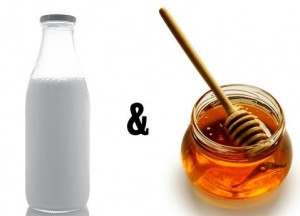As Israel was preparing to enter into the Promised Land, Moses described what it was like. He made three distinct observations which were to  inspire, encourage, motivate and challenge His People as they inherited the new life of freedom from slavery that He was granting to them. The first description can be found In Deuteronomy 11:9, where he said it was a land “…flowing with milk and honey.” Yes, it’s a land in which God’s blessings could be experienced. Israel leads the world in production per acre. They have reclaimed the wilderness in many ways and we see remarkable grains, fruits, and nuts growing everywhere. From our buss window all along the route from the north to the south in Israel we see evidence of a land, even today, flowing with milk and honey.
inspire, encourage, motivate and challenge His People as they inherited the new life of freedom from slavery that He was granting to them. The first description can be found In Deuteronomy 11:9, where he said it was a land “…flowing with milk and honey.” Yes, it’s a land in which God’s blessings could be experienced. Israel leads the world in production per acre. They have reclaimed the wilderness in many ways and we see remarkable grains, fruits, and nuts growing everywhere. From our buss window all along the route from the north to the south in Israel we see evidence of a land, even today, flowing with milk and honey.
The “land of milk and honey” is a phrase that’s become an idiom in many languages. It’s so well known in every generation that even the contemporary versions (except the CEV and the NCV) retain the KJV expression “a land flowing with milk and honey”; the NCV has “a fertile land” and the CEV, “land, rich with milk and honey.” The CEV also translates the same Hebrew phrase in Jeremiah 11:5 as, “this wonderful land.” In Alfred Lord Tennyson’s “The Lover’s Tale,” The lovers look at the Mountain View and say, “A land of promise, land of memory, A land of promise flowing with milk and honey, of delicious memories.” In Byron’s Don Juan, he describes a banquet and writes, “all human history attests that happiness for man—the hungry sinner!—since Eve ate apples, much depends on dinner. Witness the lands which ‘flowed with milk and honey,’ Held out to the hungry Israelites: To this we have added since the love of money, the only sort of pleasure which requites.”
Why “milk and Honey?” The Dictionary of Biblical imagery says, “Next to bread, milk was the most important staple in the diet of the Hebrews. A land that produced an abundance of milk had to be rich in pasturage, so by extension a picture of successful farming enters one’s imagination. Honey, valued for its sweetness rather than as a necessity of life, was rare enough to rank as a luxury. As images of desirability and abundance, therefore, these two images combine to form a picture of total satisfaction. The image of “flowing” suggests a rich fullness that surpasses all need and sets up a contrast with the arid wilderness. Perhaps they are even an example of Hebrew merism (naming opposites to cover everything between as well), suggesting the whole spectrum of food, from the necessary to the luxurious. As people step from slavery to the world into the wonderful freedom of faith in Christ, they too experience a new meaning to a land of milk and honey.